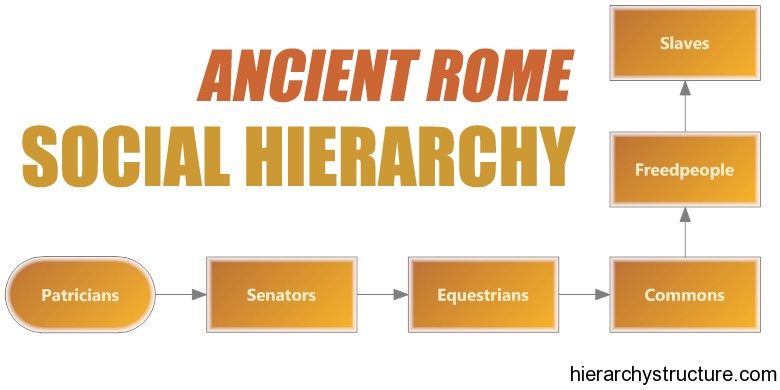In Rome, the society was highly class conscious and hierarchical. Even, there were multiple social hierarchies present and mobility was also possible between the classes. As per ancient Rome social hierarchy, the whole society of Rome was divided into six classes known as Patrician, Senators, Equestrians, Commons, Freedpeople and Slaves. Out of these, Patricians, Senators and Equestrians are considered as the upper classes, Commons were considered as the middle classes and Freedpeople and Slaves were considered as the poor lower classes. Let us discuss in details about the different classes.
Ancient Rome Social Hierarchy:
1. Patricians: At the time, when Rome was under monarchic rule, all the official and the advisories position of the king were occupied by the members of the wealthiest families known as the patricians. After the dissolution of the monarch rule, the patricians took control over the city and formed the basis of aristocracy.
Another associated class of the Patricians was the Plebeians, who could not become politically active at that of the Patrician class. Instead, they became priests and joined the senatorial class. They also got married to the patrician families. After a certain period, the Plebeians also became wealthier and politically active and they got associated with the Patricians in strengthening the social and political scenario.
2. Senators: This class of ancient Rome social hierarchy got its position due to the political power that it possesses. The power is although less than that of the Patrician class. The class included all men who served in the senate. This class was dominated by the nobles. The nobles were the families whose ancestors included at least one ambassador. At that time, a man with a property value worth 800,000 sesterces was able to earn a lifelong membership to the senatorial class for the whole family.
But, unlike the patricians; the senators have to follow certain restricted rules to live in the society. Sometimes, they were legally forbidden to take part in any form of business. It was made a rule that a member of the Senate group cannot own a Cargo ship.
3. Equestrians: This class got its position due to its tendency towards the economic aspect. A man was entitled to belong to the Equestrian class along with his/her family, if s/he possessed a stable minimum wealth worth 400,000 sesterces. Equestrians were primarily involved in various types of businesses which were prohibited to the Senator class.
Basically, it can be said that equestrians are the members from the senator families who gave preference to the monetary and business gain than to politics. In spite of the fact that they were not into politics; they are influential due to the monetary wealth that they possessed.
4. Commons: The Commons were all other freeborn Roman citizens. The special trademark of the Roman citizens was their dress called as Toga. All the common citizens had the right to arrange a legal marriage with another Roman citizen.
5. Freedpeople: The men and women belonging to this class were slaves in the early days but have now recovered their freedom. However, they were not fully freed and they have had various restrictions regarding their legal rights. They are not eligible for working in the public offices.
6. Slaves: This was the lowest class of the Ancient Roman Hierarchy and they don’t have any freedom of their own. They used to be the property of their masters.

